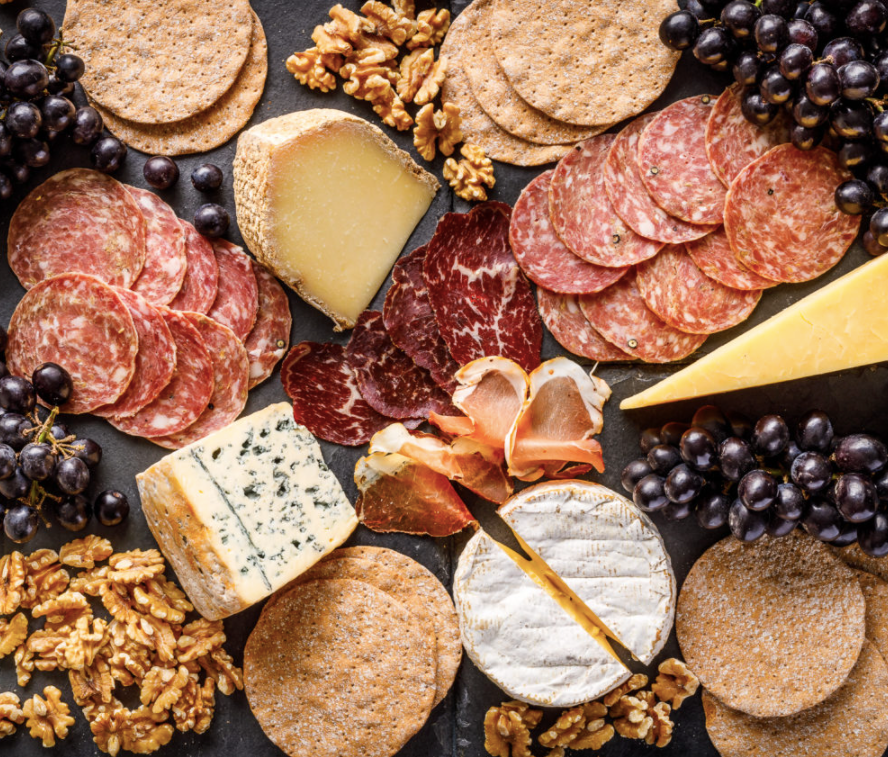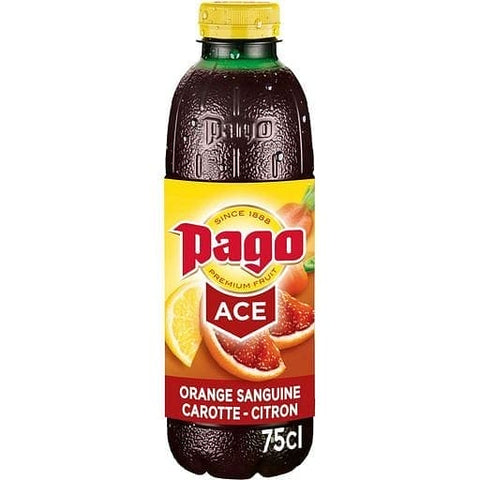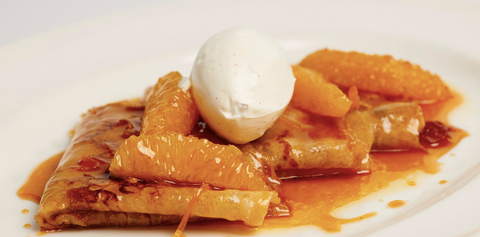We wouldn't blame you if you were confused when you first heard "charcuterie." If you've never seen or heard of a charcuterie board, the name may raise your eyebrows when you see it on a menu. We've got you covered if you've ever wondered what a charcuterie board is or why anyone would want to eat one.
Let’s Talk Charcuterie!
Charcuterie includes products such as confit, ham, terrines, sausage, galantines, pâtés, ballotines and bacon. Created to preserve meat before refrigeration, they are now used to enhance the flavors that the preservation process imparts. In recent years, the charcuterie board has regained prominence. These appetizers are frequently offered during cocktail parties and other social gatherings, as well as at the start of a meal in a decent restaurant. On a wooden board or another large plate, they're usually placed in a pleasing aesthetic and fragrant manner. Everything else is there to enhance the flavor and texture of the preserved proteins, with the cured meat serving as the star.
While the finger meal has been around for decades, recent interest has restaurants and pubs all around France coming up with their adaptations, some of which are rather inventive. You can also make your own at home, allowing you complete creative control over the board's appearance.
History
A quick history lesson is in order before we move on to the present. "Charcuterie" is formed by combining the terms "chair" and "cooked" in French. The name was coined in 15th century France to designate businesses that sold pork items, including the internal organs of the pig.
Please, don’t lose your appetite. Keep reading!
The tradition of smoking and salting meats to preserve them stretches back to ancient Rome, almost 6,000 years. Nothing from the animal's heart, lungs, kidneys, fat, or brain should be wasted, according to charcuterie.
Ingredients in Charcuterie
In our opinion, one of the best aspects of a charcuterie board is that it offers a tactile dining experience. Utensils aren't required for eating things from a charcuterie board, aside from spoons or spatulas to apply spreads and items to your plate. Only a few pieces of equipment will be required. A cheese knife and a serving board (this circular board or this rustic style board are both great options!). I grill the bread with Adriatic fig and Marcona almonds jam on top of the goat cheese! Amazing!
The main ingredients of a charcuterie board are meats and cheeses. Nuts, fruits, bread, condiments like mustard or honey, olives, and pickles are served on these boards in many restaurants and house gatherings. Capicola, salami, and prosciutto, to name a few, are examples of popular charcuterie meats. Charcuterie frequently employs dry-cured chorizo and mortadella.
It's all about personal taste when it comes to cheese. It's all about the meat on your platter and what goes well with it. A traditional cheese board features a range of cheeses. Popular variations include aged cheddar and aged gouda. Parmigiano-Reggiano and Gruyere cheeses are examples. There should always be contrasting cheeses present to give each bite a unique flavor profile.
Cured Meats, Wine and Cheese
A glass of wine is traditionally served with charcuterie. One simple reason is that it works effectively when large groups of people are together in one location, such as at a party or a restaurant. It pairs well with a variety of wines as well. Yes, it's an exaggeration, but it's accurate. Prosciutto and other salty dishes work well with cooled sparkling wines. This is because they are low in alcohol, rich in acid, and just sweet enough to counteract the saltiness. Pinot Noir and Sauvignon Blanc are both excellent options. Traditionally, charcuterie has been matched with full-bodied red wines like Cabernet Franc or Merlot.
"Everything Old is New Again"
Charcuterie, like so many other resurgent ancient cuisines, is a culinary specialty born of necessity: its how meats were kept fresh before refrigeration. Along with home-brewed beer, fermented vegetables, pickles, kombucha, and broth, the traditional food movement has rejuvenated and elevated charcuterie. It should also be front and center, in my opinion. When you order a charcuterie at a restaurant, what should you expect? When it's served in a restaurant, charcuterie is usually presented as an appetizer on a board with almonds and artisan cheese.
How to Make It Your Own For a Party
There are no rules when it comes to serving charcuterie at home, which is fantastic! Keep things simple (maybe just the cured meats?). Fresh or dried fruits, crackers, and gourmet pieces of bread spreads such as jams, preserves, and honey are also excellent choices! You can either keep it simple by using a little dish or go all out by using a large platter!
For Holidays, Charcuterie is a terrific choice
A charcuterie board is quick and easy to put together, making it ideal for holiday gatherings. Simply go to the specialty section of your local supermarket and select something that looks fantastic, then pins it to a board! Why would you want to make anything else when you already have something so lovely and easy to make? I've got some pointers for you if you're still not sure you can construct a platter as gorgeous as mine!
Make it A Meal!
The use of charcuterie is no longer limited to appetizers. "If this only came with a salad, it would be the perfect easy lunch," I'd say every time I ordered charcuterie at a restaurant to my family. When I don't feel like cooking, I make my own simple, delectable, and satisfying meal.

The Recipe and Serving Suggestions
A charcuterie board is quick and easy to put together, making it ideal for holiday gatherings. Simply go to the specialty section of your local supermarket and select something that looks fantastic, then pins it to a board! This is more of a how-to and a list of suggestions than a recipe. It's important to remember that there is no such thing as a terrible choice.
Ingredients
Meat: Forcemeat
The term "forcemeat" refers to a mixture of crushed lean beef emulsified with fat. The ingredients can be ground, sieved, or puréed to get the appropriate emulsification. Depending on the desired consistency of the completed product, the emulsification texture may be smooth or gritty. Various types of forcemeats are used in the making of charcuterie. Pigs, fish (salmon, trout, or pike), game meats (rabbit, boar, or venison), seafood, game birds, pork livers veal, and poultry are all regularly used to make forcemeats. Because it has a neutral flavor, pork fatback is frequently used as the fat component of forcemeat. Ground or diced beef is combined with salt and placed in a tube to make sausage. Sheep, hogs, and cattle tubes are the most common animal-derived tubes. Fresh and cooked sausage is the two most popular types.
Sausages
-Boudin
These delightful sausages are produced with the ground; flavored beef packed in natural casings, then poached or blanched. Blanc and noir variations are available (white and black). The addition of pig's blood to the sausage gives it the moniker "boudin noir."
-Saucisson
Saucisson is salami that has been fermented and dried. Saucisson sec is rich, meaty salami that resembles pepperoni. In the charcuterie kitchen, salt provides four vital purposes for food preservation. Osmosis, dehydration, fermentation, and protein denaturation are the result of salting.
-Rillettes
Rillettes are made by slowly cooking rabbit, hog, or duck in fat until it is completely tender. The meat is then shredded and seasoned to form brown jam, a savory spread popular in France's Tours area.
-Lonza
Lonza is produced from boneless pig loins that have been smoked with spices after being dry-cured (the same cut of meat that gives us pork chops).
-Soppressata
Soppressata is dry salami produced in the Italian regions of Calabria, Vicenza, and Tuscany. Different varieties and flavors include cumin, black pepper, red pepper, and chili peppers, to name a few.
Various terrines and pâtés
Terrines and Pâté are frequently served in an earthenware dish or with a pastry crust. A terrine is an earthenware container that holds the meal as well as the food itself. The same components are used in both pâté and terrine: Pâté is finer-textured liver forcemeat, whereas terrines are typically made with coarser forcemeat. The chopped or crushed meat is strongly seasoned, with fat and aromatics incorporated. Because they'll be served cold, seasoning is essential.
Duck galantine
After the French Revolution, the chef of the Marquis de Brancas created galantine, a cold poultry dish. Skinned and boned chicken or another bird is used to make the galantine. The pounding breast is put on top of the skin. On top of the pounded breast, forcemeat is inserted. The galantine is then coiled such that the breast ends meet. After that, the galantine is wrapped in cheesecloth and poached in chicken broth until it reaches the desired internal temperature.
Roulade
A roulade is similar to galantine. The roulade is refrigerated after it has been taken from the poaching liquid, rather than rolling it uniformly to meet the ends of the breasts.
Seasoning and flavoring agents
Due to the strong flavors of salt, many cured items require the application of sweeteners and other flavoring components. Maple syrup, corn syrup, sugar, honey, and dextrose are all sweeteners that can be employed in food curing. Dextrose is commonly used in cured meat because it softens the harshness, adds moisture, and reduces sweetness. Sweeteners aid in the stabilization of meat hues and the fermentation process by providing sustenance to bacteria.
To help improve the flavor of the finished product, a variety of herbs and spices are employed in the curing process. Cardamom, mace, nutmeg, allspice, and Cinnamon are some of the most prevalent sweet spices. Fresh and dried chilies, vinegar, apple juice, and wine, are some of the other flavorful ingredients.
Cheeses
My favorite part is the cheese. My favorite cheeses are hard cheeses like gouda, cheddar, and Manchego, as well as soft cheeses like brie and chevre. The beauty of the board is that you may customize it to your guests' tastes! If you're still confused, ask the staff at your local grocery store's cheese counter!
Fruits and Veggies
You can add grapes, sliced apples, pears, berries, or melon to your dish, as well as dried mango, apricots, or dates. Persimmons, fresh figs, and pomegranate seeds add a festive touch to this meal, which is perfect for the holidays! Of course, any sliced vegetables would suffice, and a selection of superb olives and pickles will provide a salty note to the table.
Crackers and Bread
You can eliminate these and still have a terrific board if you keep your carbs under control. If you do decide to include them, be sure to acquire a selection of gourmet crackers and artisan pieces of bread in different forms, flavors, and textures to keep things interesting! Leslie Stow Crackers are one of my favorites...and she now makes gluten-free versions! Breadsticks are also good, but a toasted baguette is always a good choice.
Vinegar, Spreads, Oils, and Honey
Place the honeycomb or honey directly on the surface or in a small bowl. Spread a good amount of Adriatic fig or other fruit spread on a log of goat cheese to use on crackers and toast. Set out a plate with balsamic vinegar and olive oil for dipping bread.
Seeds and Nuts
In addition to dried salted nuts, I recommend chocolate-covered raisins or nuts, caramelized nuts, seed/spicy nut combinations, and Marcona almonds.
Decorating with greens:
Add thyme, rosemary sprigs, basil or lettuce leaves to round off your board.
They Bring Us Closer Together
Nothing beats sharing an appetizer with friends, and charcuterie boards are the most straightforward starting we can think of. It's just as much fun to gather around a charcuterie board and choose your favorites, experiment with new combinations, and talk about your preferences as it is to eat them! And there's rarely any waste—you can bet that if you don't like something on the board, someone else will!




